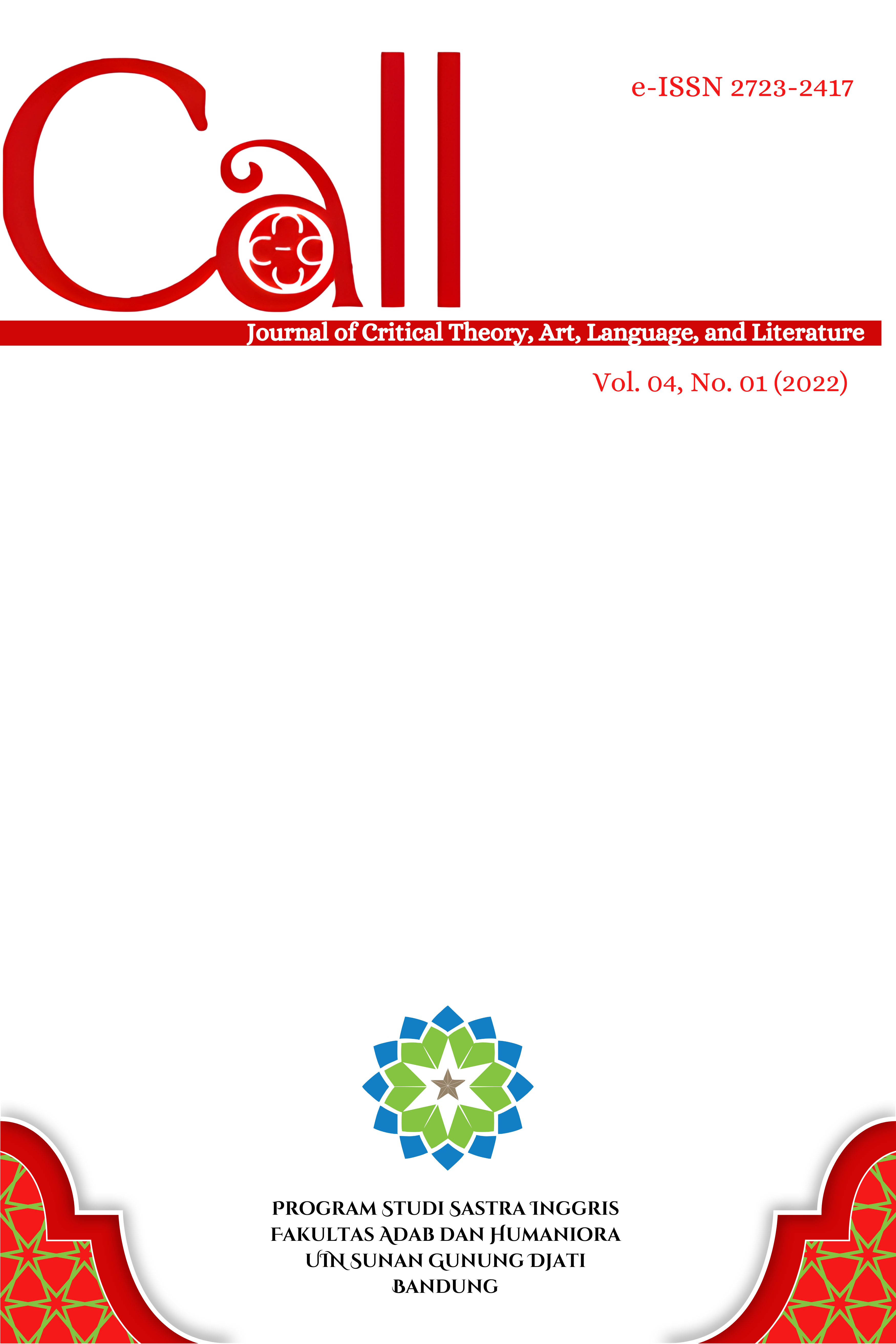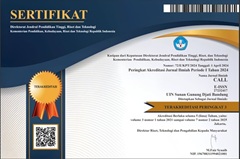JARGON ON PANDEMIC ERA FOUND IN WEBSITES
DOI:
https://doi.org/10.15575/call.v4i1.17017Abstract
Pandemic has created a lot of new jargons that are rarely existed before. Jargon is a special words that only used in certain field. While all of these jargons are in the form of word. As a result, this research discusses morphological analysis with an emphasis on derivational, inflectional, and word construction with the formulation of problems are: how is the morphological analysis of jargon on pandemic era found in websites and what are the meaning of each jargon on pandemic era. The aim of this research is to know the morphological analysis and the meaning of jargon on pandemic era. This research is using qualitative approach that kind of this study includes to library research. The data sources were obtained through documentation from websites like The Jakarta Post, The Washington Post, New York Times, CNN, and BBC. For the data analysis of this research used content analysis which refers to the news texts on websites. The results of this research indicate that there are 40 jargons on pandemic era that found in websites, such as 1 jargon is blending, 6 jargons are acronyms, 6 jargons are compounding, 2 jargons are derivational affixes, 5 jargons are inflectional affixes, and 20 jargons are multiple processes. Its may also be stated that while there are numerous morphological analyses of jargon throughout the pandemic era, the majority of them pertain to the multiple processes.
Keywords: morphological analysis, jargon, pandemicReferences
Alim, W., S. (2020). Intriguing Games to Enhance Students` Understanding of the Morphology Materials. Edukasi: Jurnal Pendidikan Dan Pengajaran, 7(2), 159–169. https://doi.org/https://doi.org/https://doi.org/10.19109/ejpp.v7i2.6811
Ary, D., Jacobs, L. C., Irvine, C. K. S., & Walker, D. (2018). Introduction to Research in Education. Cengage Learning. https://books.google.co.id/books?id=X69EDwAAQBAJ
Astutik, Y. (2016). An Analysis on Jargon Used in Indonesia LAWAK KLUB (ILK) Program on Trans 7. Jurnal Dimensi Pendidikan Dan Pembelajaran, 5, 58–64.
Booij, G. (2007). The Grammar of Words: An Introduction to Linguistic Morphology. Oxford Scholarship Online. https://doi.org/10.1093/acprof:oso/9780199226245.001.0001
Djawa, Y. A. (2018). Analysis of the Jargons Used by Players of the Clash of Clans Game, an Online Game. Academic J Edu.Sci, 1(1), 28–39. https://doi.org/10.22341/AJES.000101P028
Fitria, T. N. (2021). Word formation process of terms in COVID-19 pandemic. Leksika: Jurnal Bahasa, Sastra Dan Pengajarannya, 15(1), 18–26. https://doi.org/10.30595/LKS.V15I1.9248
Hamawan, Z. (2011). Morphology in English. Word formation in cognitive grammar. Bloomsbury Publishing. https://www.bloomsbury.com/uk/morphology-in-english-9780826419460/
Jannedy, S., Poletto, R., & Weldon L, T. (1996). Language Files: Materials for An Introduction to Language & Linguistics (6th ed). Taipei: Bookman.
Kusumawardhani, P. (2020). AFFIXES ANALYSIS IN A “HANSEL AND GRETEL†STORY TO ENGLISH YOUNG LEARNERS: A MORPHOLOGY PERSPECTIVE. Wanastra: Jurnal Bahasa Dan Sastra, 12(1), 08–15. https://doi.org/10.31294/W.V12I1.7407
Lieber, R. (2009). Words and sentences: the interface between morphology and syntax. In Introducing Morphology (pp. 143–156). Cambridge University Press. https://doi.org/10.1017/CBO9780511808845.011
Lieber, R. (2015). Introducing Morphology. In Introducing Morphology. https://doi.org/10.1017/cbo9781316156254
O`Grady, W., & Archibald, J. (2016). Contemporary Linguistic Analysis: An Introduction, 8th edition. Pearson Canada.
Rohbiah, T. S. (2020). An analysis of Semantic changes of English lexical borrowings in Indonesia Tourism field. Loquen: English Studies Journal, 13(1), 40–50. https://doi.org/10.32678/LOQUEN.V13I1.2554
Siboro, E., & Bram, B. (2020). Morphological Analysis of Derivational Affixes in Brothers Grimm’s the Story of Rapunzel. English Franca, 4(1). https://doi.org/http://dx.doi.org/10.29240/ef.v4i1.1475
Syafitri, D., & Ikhsan, M. (2019). An Analysis of Jargon Used in Political Website. Linguistic, English Education and Art (LEEA) Journal, 2(2), 151–172. https://doi.org/10.31539/LEEA.V2I2.694
Tokar, A. (2012). Introduction to English Morphology. Peter Lang.
Downloads
Published
Issue
Section
Citation Check
License
Authors who publish in CALL agree to the following terms:
- Authors retain copyright and grant the journal right of first publication with the work simultaneously licensed under Attribution-ShareAlike 4.0 International (CC BY-SA 4.0) License that allows others to share the work with an acknowledgment of the work's authorship and initial publication in this journal.
- Authors are able to enter into separate, additional contractual arrangements for the non-exclusive distribution of the journal's published version of the work (e.g., post it to an institutional repository or publish it in a book), with an acknowledgment of its initial publication in this journal.
- Authors are permitted and encouraged to post their work online (e.g., in institutional repositories or on their website) prior to and during the submission process, as it can lead to productive exchanges, as well as earlier and greater citation of published work (See The Effect of Open Access).




